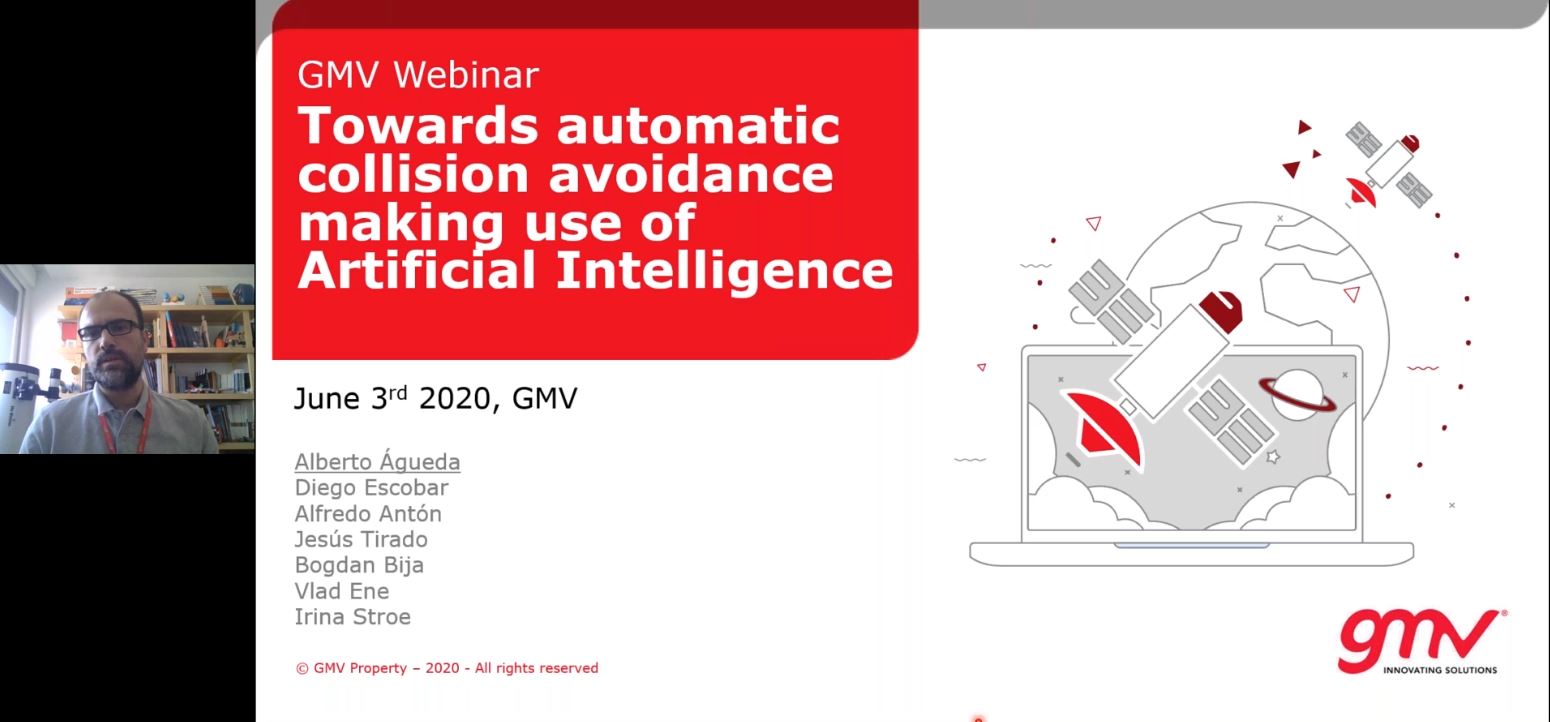Towards Automatic Satellite Collision Avoidance Through Artificial Intelligence
The threat posed by space debris to operational satellites is becoming a serious problem. Currently there are nearly 20,000 cataloged objects larger than 10 cm in low Earth orbit (LEO) and 1 m in geostationary equatorial orbit (GEO) and more than twice as many smaller fragments down to 1 cm.

The United States' 18th Space Control Squadron (18 SPCS, formerly JSpOC) issues conjunction data messages (CDMs) whenever an upcoming conjunction is detected between an operational satellite and the cataloged population. These messages are the main source of information for satellite operators to perform dedicated collision avoidance maneuvers in order to reduce the risk of collision to an acceptable level.
These critical operations are generally difficult to automate and usually lead to stressful situations involving decision-making procedures that have to take into account a large number of factors and different sources of information.
When dealing with small satellite fleets or orbiting in regions not densely populated, the number of alerts can be manageable by means of well-established procedures and intensive manual operations. In the case of large fleets, however, and particularly when operating in crowded orbital regions, the number of alerts would soar to almost unmanageable levels.
This entails the need to at least partially automate such operations in order to increase safety while limiting operational costs.
GMV is developing an Autonomous Collision Avoidance System with EUTELSAT as part of an ESA project.
However, the collision avoidance decision-making procedure (whether to affect a maneuver or not) is not easy to automate; the decision cannot be made on the basis of a single algorithm implementing simple rules on the input data (mainly directly from the CDMs or derived from them).
Nonetheless, there is a significant amount of past experience to draw on while performing these operations, and well-trained operators could make their decisions accordingly (with sufficient time for analysis). Drawn from decisions made in real or simulated scenarios, this information could hence be used as generic algorithm-training data. Here is where the concepts of artificial intelligence and, particularly, machine learning come into play.
On June 3, I gave a webinar about the applicability of AI and ML technologies to the automatic collision avoidance process and the latest developments in the domain. GMV is developing an Autonomous Collision Avoidance System with EUTELSAT as part of an ESA project. This system will be based on the use of AI and ML technology and is designed for large-fleet use (e.g., large operators in GEO and future mega-constellations in LEO and MEO) and also electric satellite orbit insertion operations (e.g., orbit transfer from LEO to upper-LEO for deployment of a large constellation or from LEO/GTO to GEO for a large telecommunications satellite).

During the webinar we discussed the applications of AI/ML technology not only for this particular problem but also for other essential space applications such as satellite operation automation, satellite communications, robotics, and onboard automation, Earth observation data processing, etc. where GMV is also doing a great deal of work. I also emphasized the vast experience of GMV’s IT division in AI, big data, and data science technology; this has enabled us to exploit synergies and apply these technologies to the space and defense domains.
It was a very interesting chat and I would like to thank my GMV colleagues working on this subject (check out the first slide!) as well as all those who attended the webinar. I'm particularly grateful for the interesting questions raised.
The following link offers the complete webinar (in English), in case you missed it. Feel free to contact me (email provided below and in the presentation) if you are interested in the subject and want to share some ideas or seek collaboration. Thanks!
Author: Alberto Águeda
[email protected]